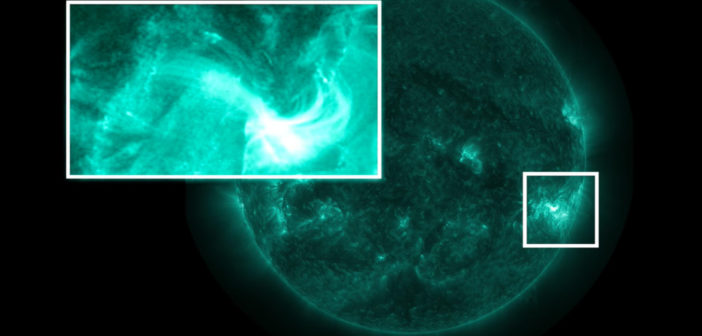Editor’s note: AAS Nova is on vacation until 18 September. Normal posting will resume at that time; in the meantime, we’ll be taking this opportunity to look at a few interesting AAS journal articles that have recently been in the news or drawn attention.
Solar eruptions don’t always succeed! The Very High Angular Resolution Ultraviolet Telescope (VAULT2.0) sounding rocket captured an event in 2014 in which a solar filament was shredded by the Sun’s own magnetic forces before it had the chance to result in a coronal mass ejection. These observations, detailed in a recently published paper in ApJ led by Georgios Chintzoglou (Lockheed Martin Solar and Astrophysics Laboratory and UCAR, Boulder), mark the first time we’ve witnessed a filament being torn down by the Sun — allowing us to investigate in detail how and why this happened. Check out the video below (by NASA’s Goddard Space Flight Center/Genna Duberstein) for an overview of the failed eruption and what we learned.
Original article: Georgios Chintzoglou et al 2017 ApJ 843 93. doi:10.3847/1538-4357/aa77b2
NASA feature: NASA Watches the Sun Put a Stop to Its Own Eruption
